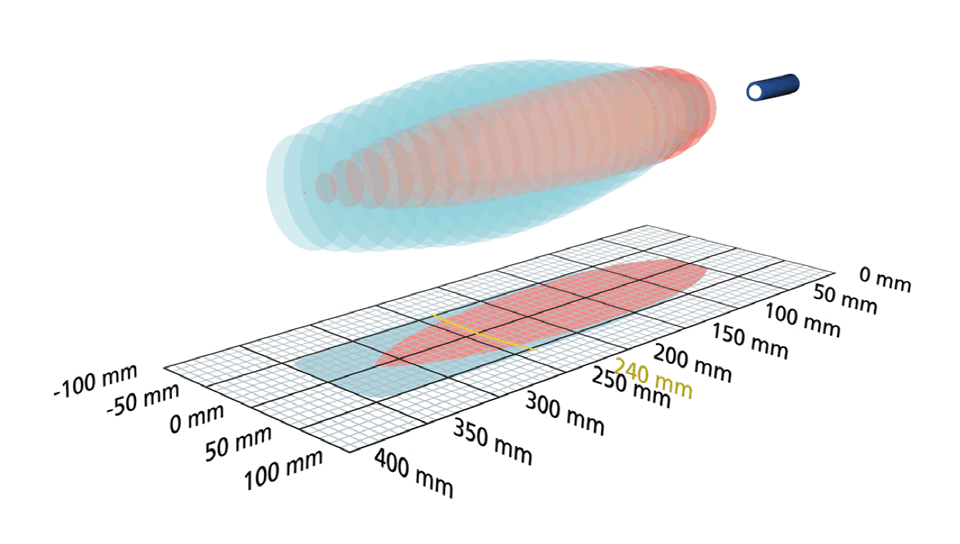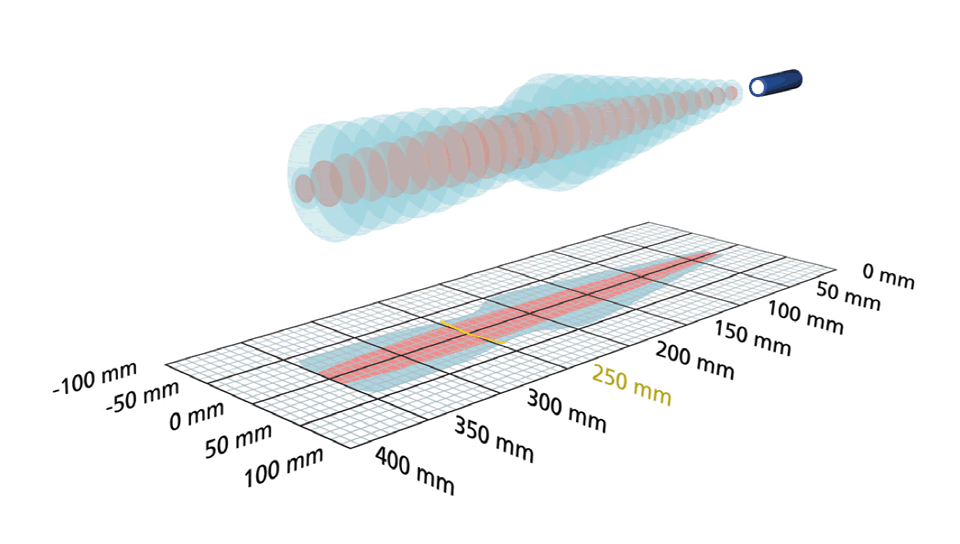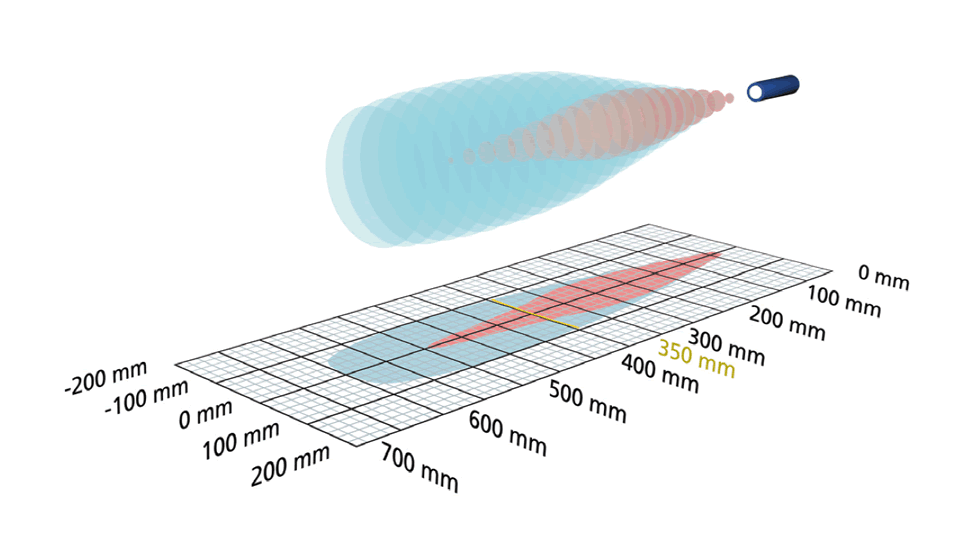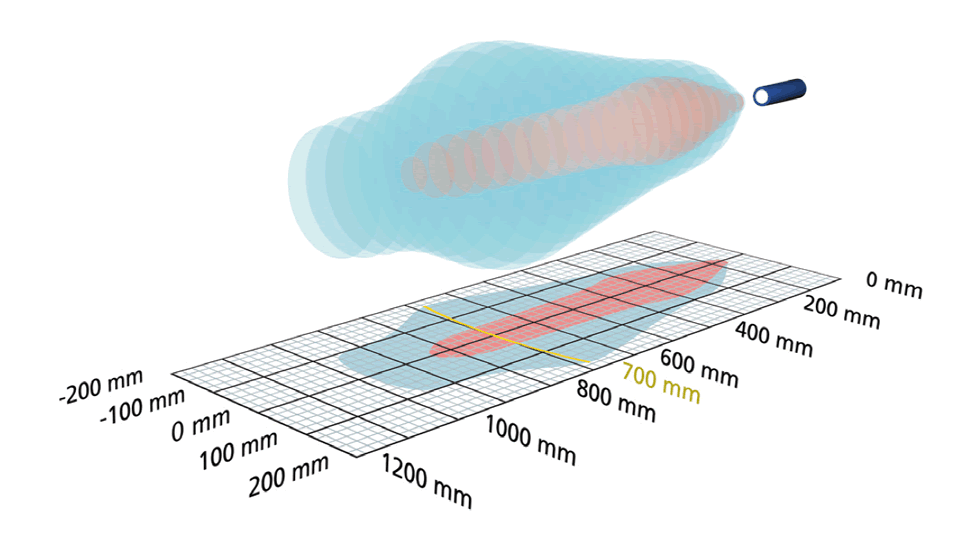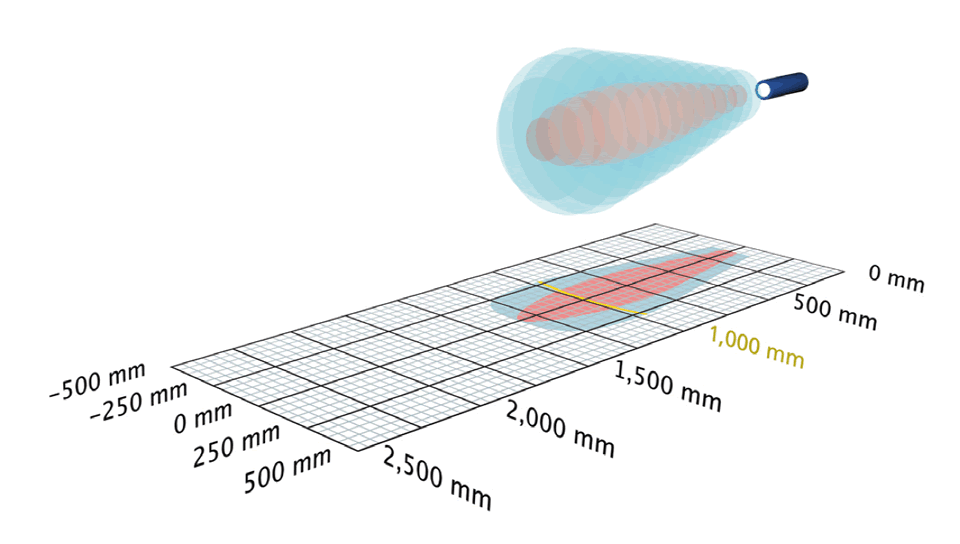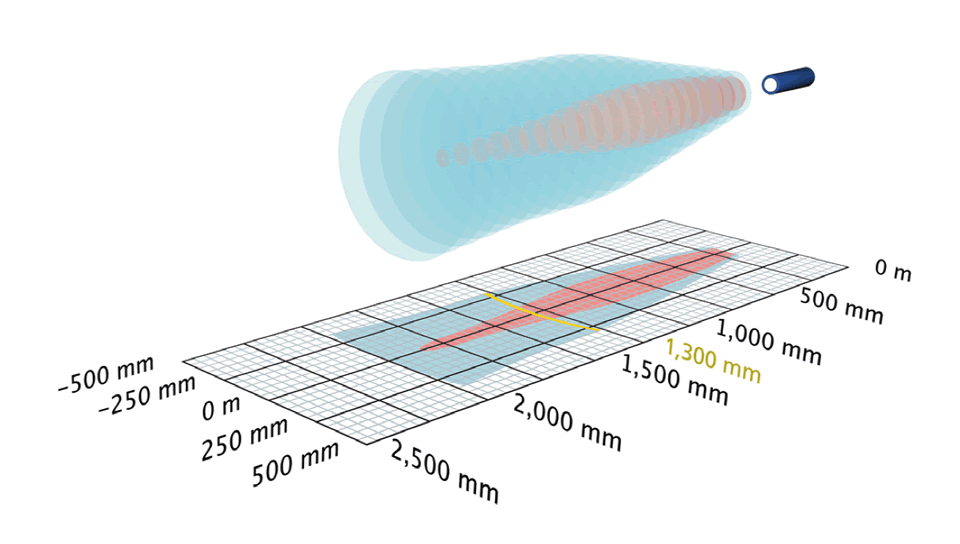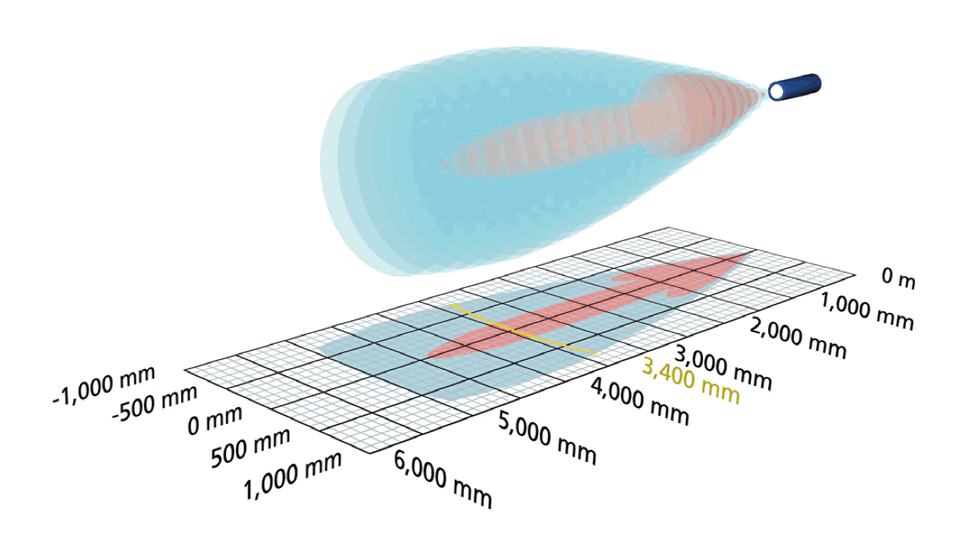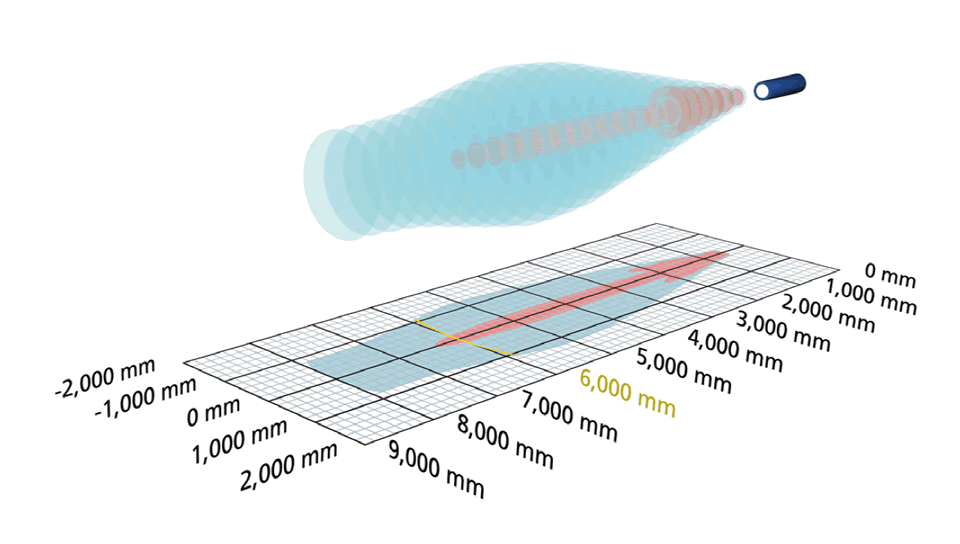The detection zones of ultrasonic sensors
The most important criterion to bear in mind when selecting an ultrasonic sensor is its detection range and the associated three-dimensional detection zone.
In measuring the sensors various standard reflectors are introduced into the detection zones from the side and the points at which these reflectors are detected by the sensor are marked.
Objects may be introduced into the detection zone from any direction.
The red areas
are determined with a thin round bar (10 or 27 mm dia. depending on type of sensor) and indicate the typical operating range of a sensor.
In order to obtain the blue areas,
a plate (500 x 500 mm) is introduced into the beam spread from the side. In doing so, the optimum angle between plate and sensor is always employed. This therefore indicates the maximum detection zone of the sensor. It is not possible to evaluate ultrasonic reflections outside the blue beam spread.
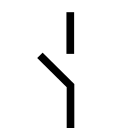
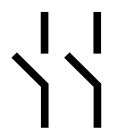
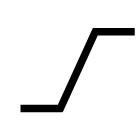
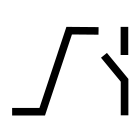








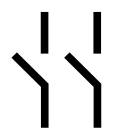
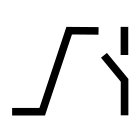





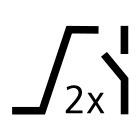
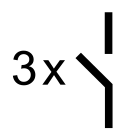









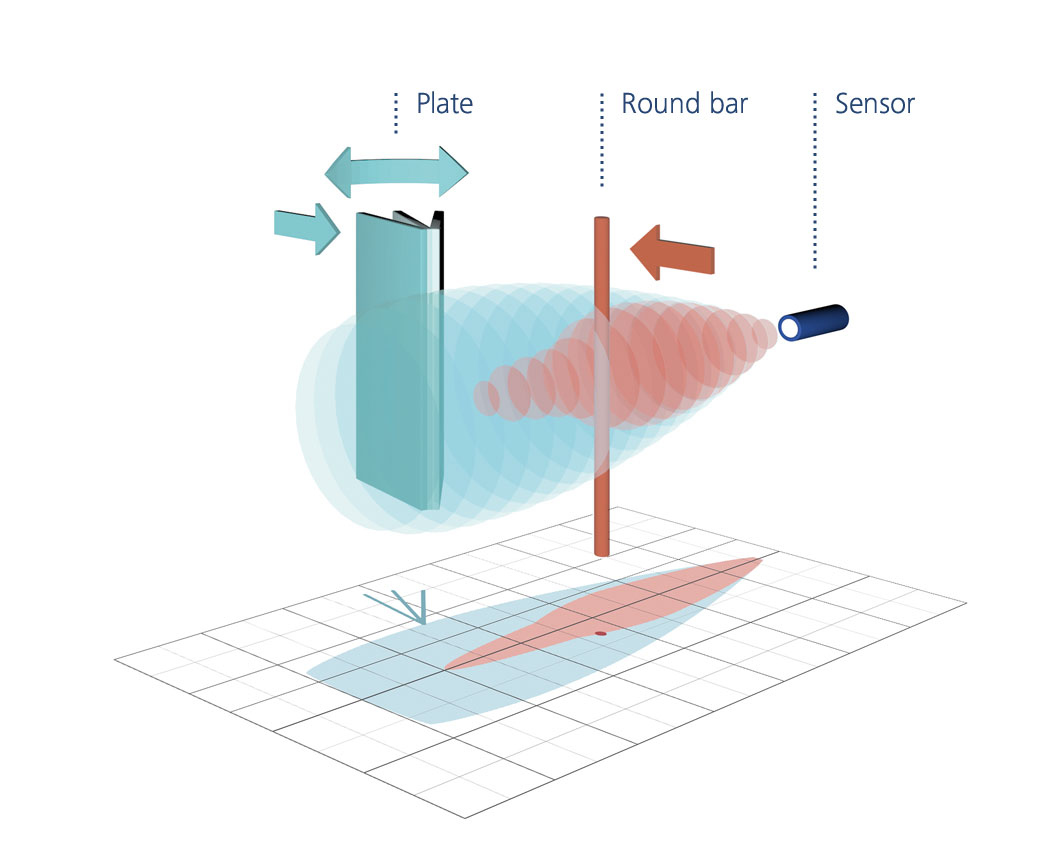
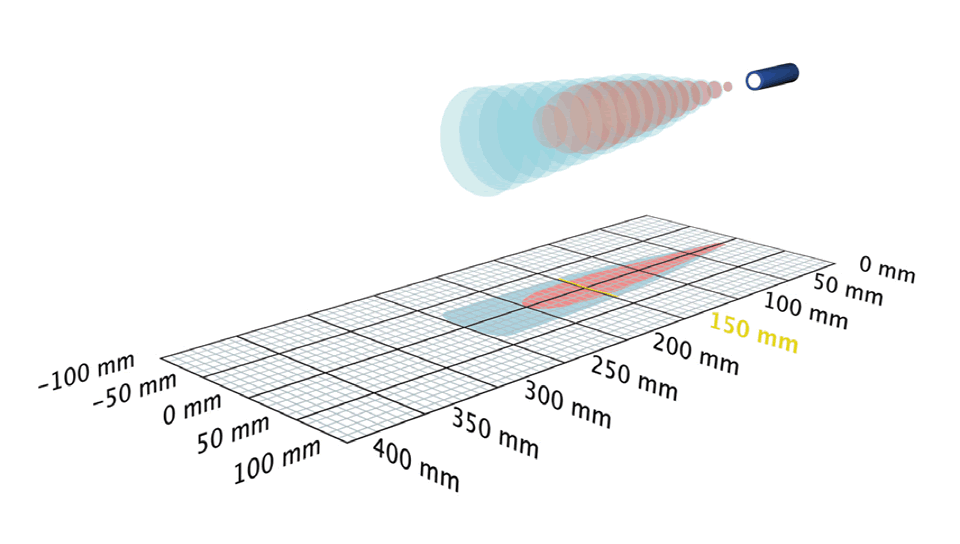
 Round bar, 10 mm Ø or 27 mm Ø
Round bar, 10 mm Ø or 27 mm Ø Operating range
Operating range 500 x 500 mm plate
500 x 500 mm plate